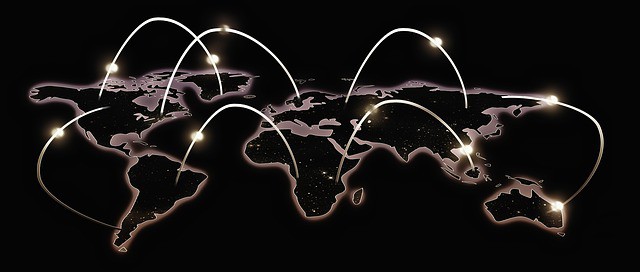Internet speed has been improved in the last decade. During the early days of the Internet, it was important to have an offline version of your software so that you could work even without an Internet connection. In this modern era of cloud computing, you don’t even need to install any software to do something on your computer. All you need is a browser and a stable Internet connection.
Cloud computing is not the only area where the improvement on the Internet has thrived in the past decade. Gaming has become more competitive now that more players are playing online. Competition became bigger. Even the movies and TV shows can now be streamed without any hassle because of the improvement in the technology used. Check out popular streaming options at Cablecompare.

But the Internet connection available right now is still not the best, even though it is better than a few decades ago. With data transmission having more demand than ever, the Internet speed should be able to keep up. It would not be too long when the day would come that we measure every small thing in gigabytes. Because of this, the Internet speed, or rather, the Internet bandwidth, should evolve too.
The speed of the connection usually depends on the Internet bandwidth that the Internet service provider provides. Internet bandwidth is the amount of data that can be sent to the client and is usually measured in Mbps or megabits per second. When you’re subscribing to an Internet service, the higher the Mbps would give you a better-perceived speed. And that’s because of the bandwidth.
Think of the bandwidth as a freeway; the more lanes you have, the less congested the traffic will be. For example, if 1 Mbps is one freeway and you’re downloading a 10 MB via a car, the car needs to cross the freeway ten times for ten seconds. But if you have a 5 Mbps freeway, it would mean four more additional freeways. Now that we have five freeways, we can also run five cars. Running five cars means that we can transport that 10 mb in just 2 seconds. That’s the reason why bigger Mbps will be faster.
A lot of Internet service providers are offering their services in 5 Mbps standard. Some people are ok with that, especially with light browsing. However, the Optimum Internet speed for gamers and people who use cloud computing for apps is higher than that.
Apps, like the Google Docs, would require a fast Internet connection so that people can collaborate on projects in a real-time environment. Gamers will also want a faster Internet because of a sure thing they hate the most when gaming: lag. Streaming will buffer if the bandwidth is not that good. With a faster Internet, more things can be done, and more time would be saved. But when to know if a bigger bandwidth is overkill?
20 Mbps is for people who want to get their casual streaming, occasional music downloads, and loading photos fixed. 100 Mbps is for people who want to get a decent speed even when sharing with a lot of people, like family usage. 200 Mbps is for the people who want a fast connection even though a lot of people use the internet to watch HD videos and play multiplayer games. 300 Mbps is already too overkill for people who want this in their homes. This bandwidth is for people who run computer shops. If you need 400 Mbps, chances are you’re using it for an organization, like a building that houses a lot of employees who use a lot of data to keep things running.
The more bandwidth you order, the more expensive your bills will be. The key to making sure that you pay the right amount for the service you’re acquiring is to know what kind of activities you do online. A lower bandwidth is good if you’re a casual browser and just like to read articles or scroll down your news feed. But if you want to have a fast Internet, then paying extra for an extra bandwidth would be the best solution for you.
If you like traveling or are not willing to pay extra for the Internet. Check out a great resource on how to try at least 10 ways of getting free internet.

